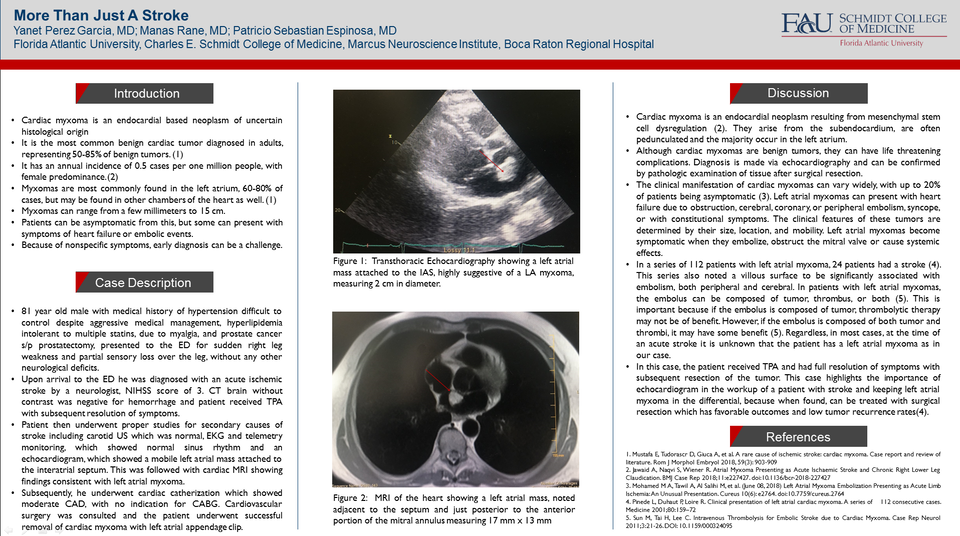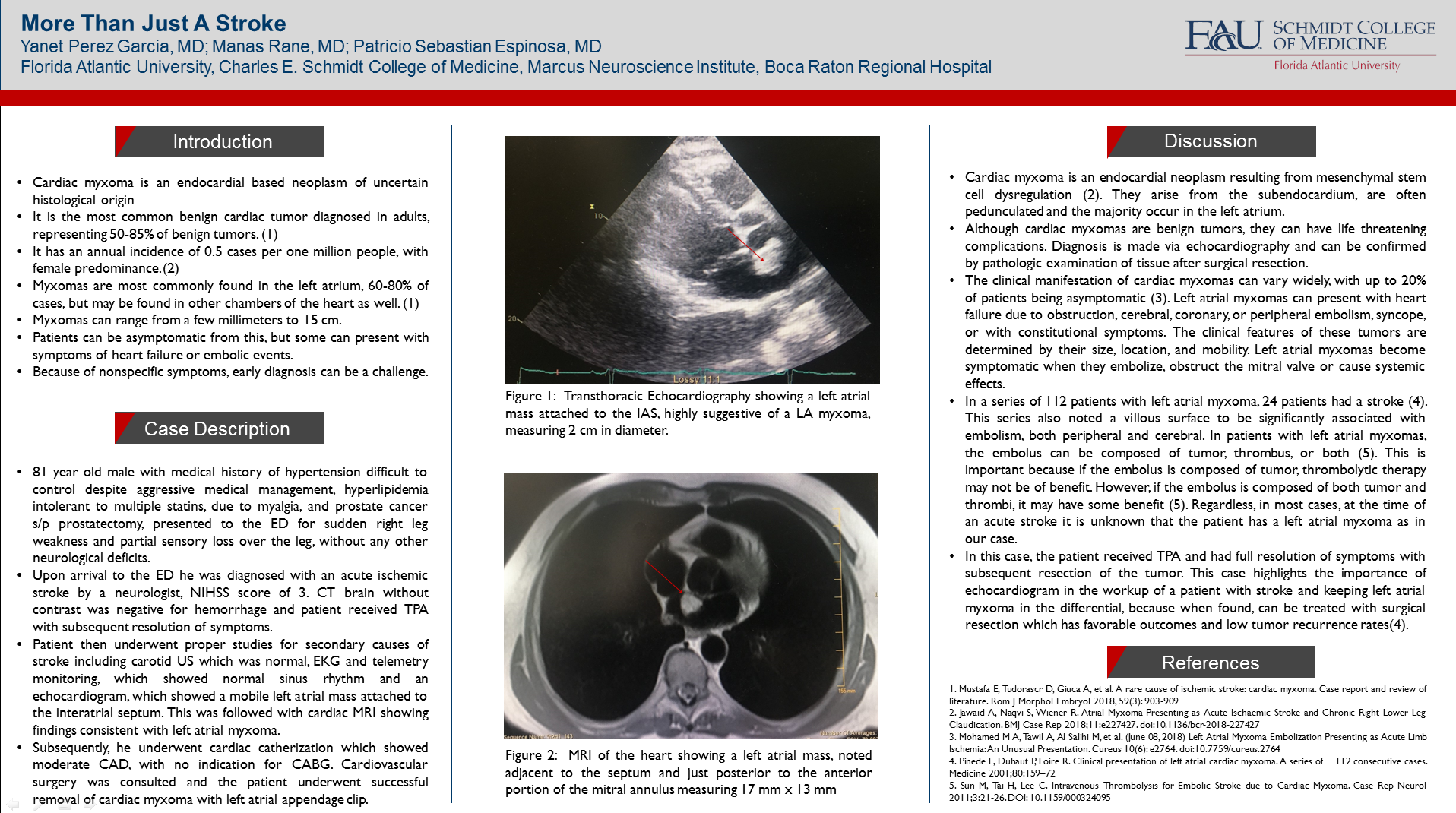Abstract
•Cardiac myxoma is an endocardial based neoplasm of uncertain histological origin
•It is the most common benign cardiac tumor diagnosed in adults, representing 50-85% of benign tumors. (1)
•It has an annual incidence of 0.5 cases per one million people, with female predominance. (2)
•Myxomas are most commonly found in the left atrium, 60-80% of cases, but may be found in other chambers of the heart as well. (1)
•Myxomas can range from a few millimeters to 15 cm.
•Patients can be asymptomatic from this, but some can present with symptoms of heart failure or embolic events.
•Because of nonspecific symptoms, early diagnosis can be a challenge.
Case Description:
•81 year old male with medical history of hypertension difficult to control despite aggressive medical management, hyperlipidemia intolerant to multiple statins, due to myalgia, and prostate cancer s/p prostatectomy, presented to the ED for sudden right leg weakness and partial sensory loss over the leg, without any other neurological deficits.
•Upon arrival to the ED he was diagnosed with an acute ischemic stroke by a neurologist, NIHSS score of 3. CT brain without contrast was negative for hemorrhage and patient received TPA with subsequent resolution of symptoms.
•Patient then underwent proper studies for secondary causes of stroke including carotid US which was normal, EKG and telemetry monitoring, which showed normal sinus rhythm and an echocardiogram, which showed a mobile left atrial mass attached to the interatrial septum. This was followed with cardiac MRI showing findings consistent with left atrial myxoma.
•Subsequently, he underwent cardiac catherization which showed moderate CAD, with no indication for CABG. Cardiovascular surgery was consulted and the patient underwent successful removal of cardiac myxoma with left atrial appendage clip.
Discussion:
•Cardiac myxoma is an endocardial neoplasm resulting from mesenchymal stem cell dysregulation (2). They arise from the subendocardium, are often pedunculated and the majority occur in the left atrium.
•Although cardiac myxomas are benign tumors, they can have life threatening complications. Diagnosis is made via echocardiography and can be confirmed by pathologic examination of tissue after surgical resection.
•The clinical manifestation of cardiac myxomas can vary widely, with up to 20% of patients being asymptomatic (3). Left atrial myxomas can present with heart failure due to obstruction, cerebral, coronary, or peripheral embolism, syncope, or with constitutional symptoms. The clinical features of these tumors are determined by their size, location, and mobility. Left atrial myxomas become symptomatic when they embolize, obstruct the mitral valve or cause systemic effects.
•In a series of 112 patients with left atrial myxoma, 24 patients had a stroke (4). This series also noted a villous surface to be significantly associated with embolism, both peripheral and cerebral. In patients with left atrial myxomas, the embolus can be composed of tumor, thrombus, or both (5). This is important because if the embolus is composed of tumor, thrombolytic therapy may not be of benefit. However, if the embolus is composed of both tumor and thrombi, it may have some benefit (5). Regardless, in most cases, at the time of an acute stroke it is unknown that the patient has a left atrial myxoma as in our case.
•In this case, the patient received TPA and had full resolution of symptoms with subsequent resection of the tumor.





